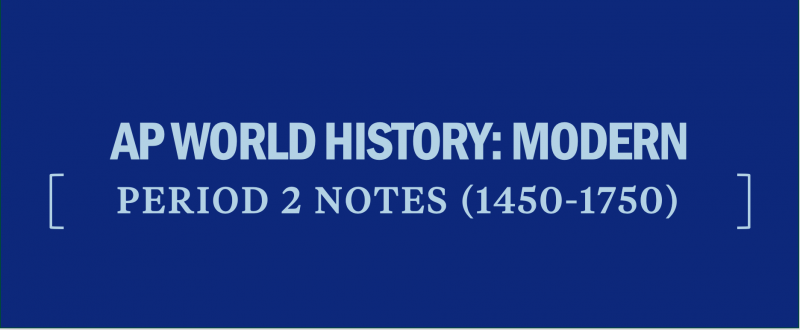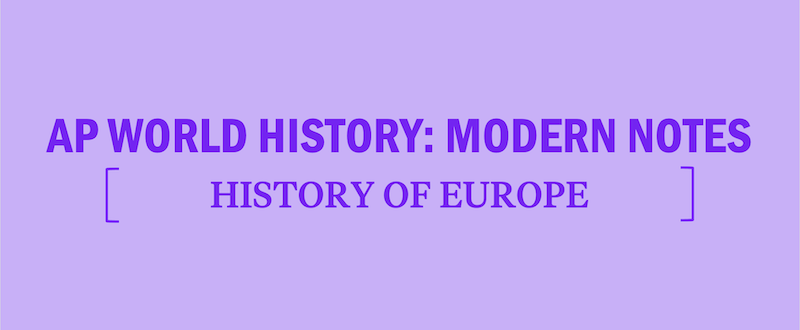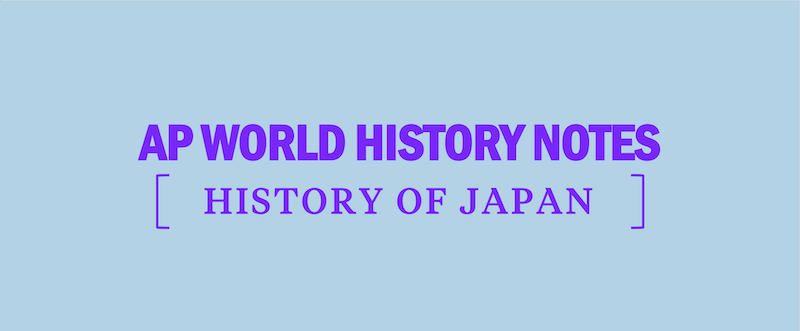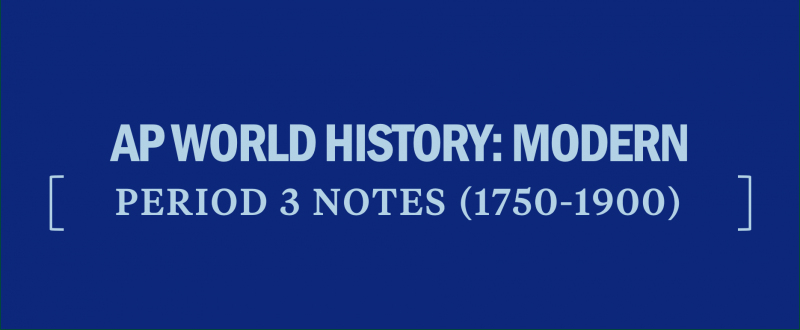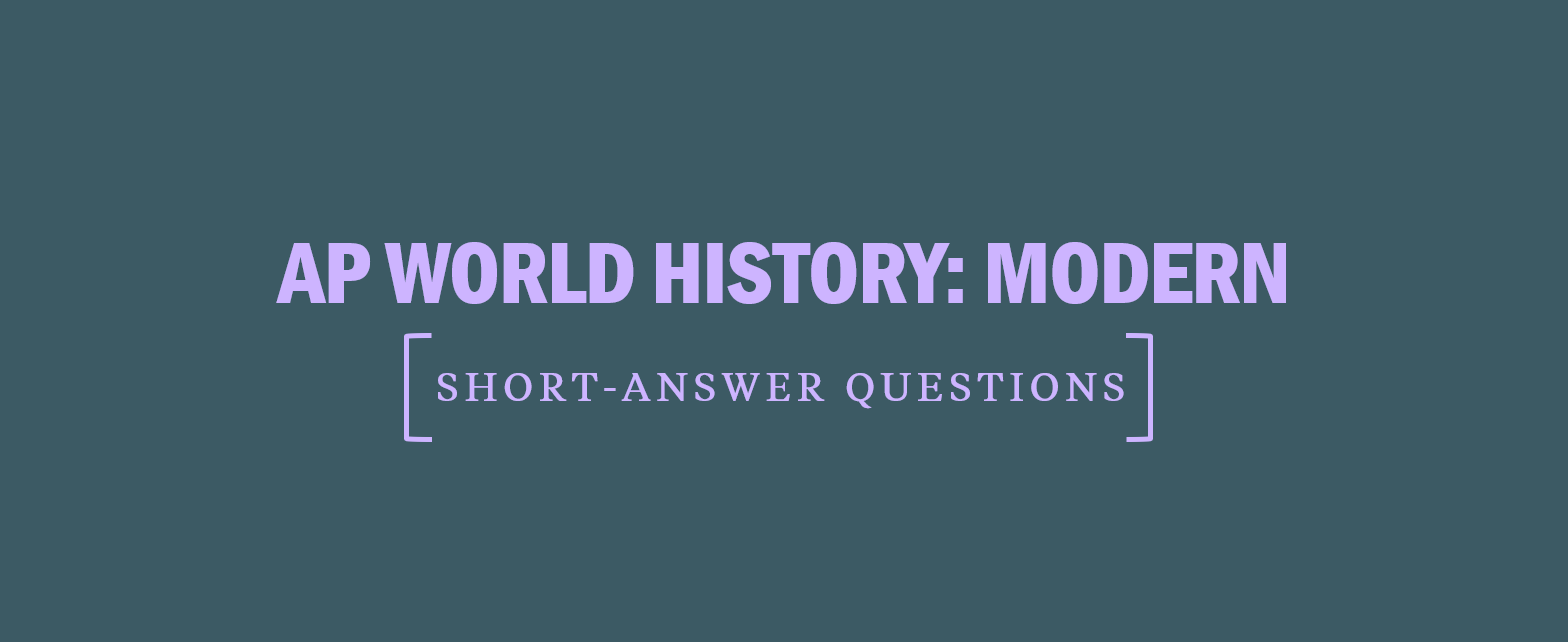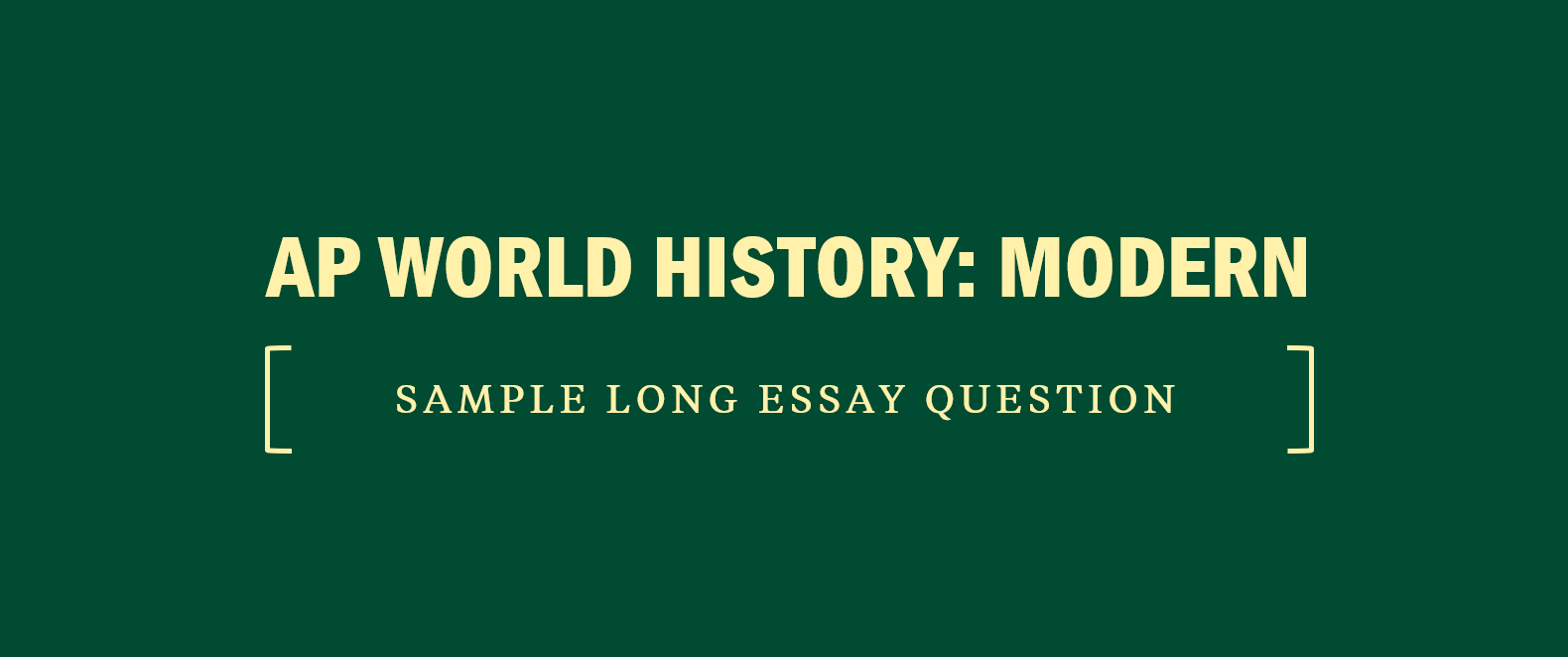AP World History: Modern—Period 2 Notes (1450-1750)
AP World History: Modern Key Takeaways — Period 2 (1450-1750)
- The Americas became part of the global trade network, spurred by the Columbian Exchange. New diseases, crops, people, and cultures were distributed throughout the world.
- Technological improvements in shipbuilding and gunpowder weapons allowed European empires to form and exercise a more prominent role in world affairs, eventually leading to colonialism.
- Indigenous populations in the Americas died by the millions due to their exposure to previously unknown European diseases. This led to the forced migration of African people to work the sugar plantations in the New World, changing social structures and creating the Triangular Trade route.
- New social structures emerged in the Americas based on racial hierarchies, such as those of the peninsulares, Creoles, mestizos, and mulattos of the Spanish colonies.
- Land-based empires in Asia grew to their greatest extent in the Qing Empire of China, the Mughal Empire, and the Ottoman Empire. Meanwhile, maritime powers like the Portuguese and the Dutch spread throughout the world following the voyages of Magellan, de Gama, and Columbus.
- Social changes occurred in Europe as the Renaissance, the Protestant Reformation, and the Scientific Revolution challenged the power of the Catholic Church and weakened traditional bases of authority, while also creating the conditions for rapid growth in European economies and populations in later centuries.
AP WORLD HISTORY KEY TERMS: PERIOD 2 (1450-1750)
Remember that the AP World History exam tests you on the depth of your knowledge, not just your ability to recall facts. While we have provided brief definitions here, you will need to know these terms in even more depth for the AP exam, including how terms connect to broader historical themes and understandings.
WORLD HISTORY: THE AGE OF EXPLORATION
- Christopher Columbus: Italian navigator who attempted to find a westward route to Asia under the sponsorship of Ferdinand and Isabella of Spain; first European to discover the New World.
WORLD HISTORY: THE DEVELOPMENT OF THE GLOBAL ECONOMY
- Conquest of Constantinople: In 1453, the Ottomans conquered the Byzantine capital and ended the Eastern Roman Empire, giving rise to the Ottoman Empire, which lasted until WWI.
- Caravel: Inspired by the Arab dhow, a compact ship of Portuguese origin that featured triangular sails and a sternpost rudder making it capable of crossing oceans; used during the Age of Exploration.
- Lateen sail: Triangular sail that allowed ships to sail against the wind, increasing maneuverability and making early oceanic sailing possible.
- Carrack: Large sailing vessel with multiple masts with a large cargo capacity; stable in rough seas, which enabled voyages of several months through difficult waters; originally developed in Europe by the Portuguese in the fourteenth and fifteenth centuries.
- Fluyt: Dutch-built cargo ship with comparatively light construction, usually unarmed; allowed for quick construction and smaller crew requirements, which facilitated the growth of Dutch maritime trade.
- Joint-stock companies: Large, investor-backed companies that sponsored European exploration and colonization in the seventeenth and eighteenth centuries; precursors to modern corporations; a famous example is the British East India Company.
WORLD HISTORY: COLUMBIAN EXCHANGE
- Columbian exchange: Beginning with the explorations of Christopher Columbus, the interchange of plants, animals, pathogens, and people between the Old World and the New World.
- Mercantilism: Economic system focused on maintaining a positive balance of exports to imports that encouraged domestic employment; measured the economic strength of a state relative to its neighboring states.
- Sugar cultivation: Specialized resource extraction process that relied on African slave labor after indigenous populations were decimated by disease; foreshadowed the intensive manufacturing of the Industrial Revolution.

